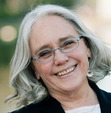Edith Maxwell's Blog, page 43
June 16, 2023
Suspended Coffees with Emmeline Duncan and a #giveaway
By Liz, welcoming Emmeline Duncan back to the blog! And she’s talking about one of my favorite things – coffee. And doing a giveaway. I mean, what could be better? Take it away, Emmeline!
A while back, I dropped into a local coffee shop to write. As I walked in, something I saw made me smile: their suspended coffee board had a couple of items, including a bowl of oatmeal and a breakfast burrito.
Wait, oatmeal is coffee? And what’s this about a Suspended Coffee?

Oatmeal is definitely not coffee, but it can be included on a Suspended Coffee board. Once upon a time, in Naples, Italy, customers would order a “caffè sospeso” from their local shop. This means they would buy two espressos: one to drink and the second “suspended,” meaning someone else could come and claim the second drink. This was all done anonymously.
Then, in March 2013, John M Sweeney read about caffè sospeso and turned it into an international movement with participating cafes worldwide. Patrons can pre-buy anything the participating café wants to include—coffee, food, etc.—and then someone down on their luck can claim the item.
As mentioned on the Suspended Coffee website, you can never know who will claim the coffee or food item. Maybe it’ll be someone homeless. Or it’ll be the guy dressed for a job interview who looks sharp—but has been interviewing for jobs for three months as he struggles to afford the basics. Or a single mother struggling to make it until her next payday. No one judges the worthiness of who claims the items; the shops trust that if someone requests one of the items, they need it to brighten their day.
One thing I appreciate about this program is how it supports both coffee shops and people down on their luck. If you run a cafe, you can’t spend your days giving out free products, even if you’d like to help. So when your customers buy food donations, it brightens someone in the community’s day while supporting the café.
When I started writing the Ground Rules series, I decided my protagonist, Sage, should have a Suspended Coffee board. I’d first seen this program at a Portland coffee cart, Ole Latte, and I knew my fictional coffee shop owner would be an enthusiastic supporter of the program.
Readers: Have you seen a Suspended Coffee board in your community? Comment on this post to be entered to win a copy of Flat White Fatality and swag!

Like her Ground Rules Mystery series, Emmeline Duncan is based in Portland, Oregon. Her series includes Fresh Brewed Murder, Double Shot Death, and Flat White Fatality, which came out on May 23rd. You can track her online at emmelineduncan.com or on Instagram and Facebook at @writeremmelineduncan and Twitter @DuncanEmmeline.
About Flat White Fatality :
To top off her coffee business, Sage is now helping out with her boyfriend Bax’s gaming company. Conveniently for Sage, it’s located next door to her Ground Rules Roastery. That makes it easy for her to pitch in with Bax’s employee team-building event. The plan is to boost morale with a scavenger hunt. And it seems to be going well—until Robbie, a programmer known for being a prankster, turns up dead in Sage’s roastery . . .
There are two suspects so far: Sage, who has no idea how the victim ended up in her space; and Bax, who was allegedly spotted arguing with Robbie the day before. But could it be a disgruntled employee? After all, Robbie’s sense of humor was known to have rubbed some coworkers the wrong way. Now, it’s up to Sage to find the culprit—before another life grinds to a halt.

June 15, 2023
Finding your publication path with Judy Penz Sheluk
By Liz, happy to welcome Judy Penz Sheluk to the blog! It was so fun to interview Judy about her new non-fiction book, Finding your Path to Publication. This is a great resource for all writers hoping to break into the publishing world, with its real-life advice and strategies for how to pick the best path for you. Enjoy the interview and make sure you pick up the book!

Liz: You mentioned that your experience with NaNoWriMo led to the idea of writing “Finding Your Path to Publication.” Tell us about that!
Judy: My local library had invited me to talk to their NaNoWriMo group about succeeding or failing at NaNoWriMo in 2019. For those who don’t know, NaNoWriMo stands for National Novel Writing Month and it takes place every November. The idea is to write 55,000 (1,666 words/day). As it turned out, no one there really cared or succeeded or failed. All they wanted to know was “What’s next? How do I get published?” That led to a second workshop, which I called Finding Your Path to Publication, and it served as an outline for the book.
Liz: Let’s talk about the second workshop — what were some of the common misconceptions or questions that people had about the publishing process?
Judy: I think the biggest misconception is that there’s big money to be made, and while it’s certainly true that some authors do very, very well, the reality is, most don’t. In the latest Sisters in Crime Business of Books Survey Report (2022), which I quote (with permission) in Path: “At the high end, 5% of all authors reported an income of more than $100,000, with an equal number of traditional and indie authors represented in that category. At the low end, 4% of all authors (3% traditional, 1% indie, 0% hybrid) earned nothing, with 22% of traditional and 41% of indie authors reporting an income of less than $1,000.” Those are sobering statistics, and while I’d never discourage anyone from writing, I think it’s important to manage expectations.
Liz: How did your background as a freelance journalist influence your decision to write a book about the publishing process? In what ways did your previous experience shape your approach to the topic?
I loved my 15 years as a journalist and magazine editor (2003-2018). During that time, I learned how to research, interview experts, vet sources, manage freelance budgets (my own and the magazines I worked for as a managing editor) and meet deadlines. Each of those skills have come in very handy with my fiction writing pursuits, but they were beyond helpful when writing Path.
Liz: Your book emphasizes that there is no one-size-fits-all path to publication. Could you elaborate on this idea and explain why it’s important for aspiring authors to understand and consider different publishing options?
Judy: The dream for most is landing a NYC agent and a big 5 contract, but unless you’re a celebrity that takes time, patience, a unique take or twist on a genre or sub-genre, a pitch-perfect pitch, and a certain amount of luck. If you’re the impatient sort, or someone who gets discouraged easily by rejection, that isn’t a path for you. Independent publishers often accept manuscripts directly, though depending on the size of the press, the quality of the services provided (editing, cover art, etc.) can vary widely. Due diligence! Self-publishing requires capital investment (editing, cover art, etc.) and there’s a definite learning curve. Additionally, there is still a stigma in some circles when it comes to self-published books. Hybrid publishers will do all the self-publishing heavy lifting, but there’s a cost, usually starting at $4,000 and going up from there. And you do have to be wary of vanity presses. More due diligence! Finally, there is social publishing, such as Wattpad, where you are merely looking to hone your craft or develop a following, rather than earn a living. The bottom line is that what works for one author doesn’t mean it will work for another. It also means that what may have been right for you five years ago (small press, for example) is no longer working. It’s okay to look at other options. Publishing isn’t like spandex. One size doesn’t fit all.
Liz: Can you share some practical tips or strategies that aspiring authors can use to navigate the publishing process more effectively? Are there any common pitfalls or mistakes that you suggest avoiding?
Judy: I think the biggest mistake aspiring authors make is sending their book out into the world before it’s truly ready. I made the same mistake when I was starting out. If you can afford it, hire a professional editor. Yes, a traditional publisher will edit your work, but they get thousands of submissions. If your book looks like it needs editing (vs. a light touch), you won’t stand a chance. At the very least, get a few beta readers (not friends, family members or writing group colleagues) to honestly critique your work and be prepared to revise, revise, revise.
If you are offered a publishing contract, read it carefully and make sure you understand the fine print. What’s the exit strategy if you’re unhappy or the publisher goes under? Who owns your characters? You or the publisher? Don’t be afraid to ask for 10 days to review the contract (this is common courtesy), and request revisions if there’s something that really doesn’t sit right. For example, why offer the foreign language rights to your book if they’ve never once brokered a foreign language deal? I cover contracts in Path in more detail, but you get the idea.
Liz: What advice do you have for authors in terms of establishing connections and finding support within the writing community?
Judy: I am a huge believer in authors helping authors. This blog, for example, is one such example where the Wickeds are helping me, a fellow author. But I am always willing to reciprocate on my own blog and have done so in the past. It can’t be a one-way street. Get active on social media. Comment on posts and share them. Pick a writing conference (yes, I cover those off in Path too!) and meet and mingle. Read books and review them on Amazon, Goodreads, etc. Join a writing association or two and get involved in a positive way. Lurking isn’t going to get you noticed.
Liz: What do you hope readers will take away from the book? Is there a particular message or lesson that you want aspiring authors to understand when it comes to choosing their path to publication?
The publishing world can be a cruel one, but it is less so when authors help each other. It is my hope that Path guides other writers on their personal journey, and perhaps gives them the push to finally take that first step, or the next step.
Thanks so much for joining me, Judy, and for writing such an informative book. Readers – what do you think? Any comments or questions for Judy? Leave them below!
About the Book:
The road to publishing is paved with good intentions…and horror stories of authors who had to learn the hard way.
For the emerging author, the publishing world can be overwhelming. You’ve written the book, and you’re ready to share it with the world, but don’t know where to start. Traditional, independent press, hybrid, self-publishing, and online social platforms—all are valid publishing paths. The question is, which one is right for you?
Finding Your Path to Publication is an introduction to an industry that remains a mystery to those on the outside. Learn how each publishing option works, what to expect from the process start to finish, how to identify red flags, and avoid common pitfalls. With statistics, examples, and helpful resources compiled by an industry insider who’s been down a few of these paths, this is your roadmap to decide which path you’d like to explore, and where to begin your author journey.


About the author:

A former journalist and magazine editor, Judy Penz Sheluk is the bestselling author of two mystery series: The Glass Dolphin Mysteries and Marketville Mysteries. (Gibbs, pictured here, is her co-author.) Her short crime fiction appears in several collections, including the Superior Shores Anthologies, which she also edited. Judy is a member of the Independent Book Publishers Association, Sisters in Crime, International Thriller Writers, the Short Mystery Fiction Society, and Crime Writers of Canada, where she served on the Board of Directors for five years, the final two as Chair. She lives in Northern Ontario. Find her at http://www.judypenzsheluk.com.
June 14, 2023
Wicked Wednesday: What our adult summers look like
By Liz, enjoying the onset of warm weather
We’re celebrating the approach of summer this month, and last week we talked about our favorite summertime activities as a kid. This week I want to know: What about now? How are we all spending our summers as an adult? Have our favorite activities changed? Any big plans this year?
For me, I’m not still riding my bike around the neighborhood pretending to be a superhero, but as soon as I put air in my tires I’ll probably still be riding it. And the beach – definitely the beach. If you need me, that’s where I’ll be.
Wickeds, what about you all?

Sherry: We are traveling some this summer, but it definitely isn’t our usual summer! We’re driving out to Colorado to attend an Ultimate Frisbee tournament. Our Australian friend, Christine, has a son playing in the tournament. We enjoyed seeing him play last year in Ohio. Then we hope to visit friends from the military in the area and friends in Cheyenne, Wyoming.
Jessie: That sounds like fun, Sherry! I remember hearing how much you enjoyed watching the game last year! As for me, I plan to spend time hiking with my son, working while listening to music in the screen house, and sipping espresso tonics. We are doing a major remodel of our house at the beach so I will spend time near the ocean off and on, but not in the usual way. If I am lucky I will make it out to Utah to visit one of my sons. I am also writing the eighth Beryl and Edwina novel that is due on September 1 so it won’t be all relaxation for me!
Julie: I love that the Harris family have become Ultimate Frisbee fans! And drinking espresso tonics sitting in a screen house sounds lovely. I started the summer season by taking last week off, which gave me time to ponder this question. Slowing down in the summer, taking walks, sitting outside to dine, eating lots of the summer fruits and veggies, and sitting on my sister’s back deck and laughing are part of the plans. I’ve also got a few events planned, but I try not to think too far into the future. I plan on enjoying every day.
Barb: I have a book due July 1, so the summer won’t start for me until then. But, shortly after that, we have friends coming for a few days (Maine is a great place for house guests), and then my granddaughter Viola for 10 days. While she’s here we’ll stay in Boothbay Harbor for a few days, since I have a couple of speaking gigs in the area. Then in August will be our week at the Jersey shore with our whole family and my brother’s family. My parents started this tradition and we’ve had a good run. Most of all I am going to love not having a deadline looming.
Edith/Maddie: Beach and relaxing sound great to me! One of the things I love most about summer is local fruits and vegetables, so I’ll be pottering in my back yard veggie garden and diving into local blueberries and sweet corn the minute they’re available at the farm store. Reading on the deck with a G&T is also a favorite way to relax. Hugh and I have reserved a week in Maine in July. Relaxing, spending time with his cousin up there, and exploring museums and brewpubs are on the agenda. Plus writing. Always writing.
Readers, how are you spending your summer? Let us know in the comments!
June 13, 2023
Sisters – Welcome Guest Angela Sanders
By Liz, so happy to be welcoming Angela Sanders today! Angie is the author of the Witch Way Librarian series and a fellow witch enthusiast, so I feel like we are kind of sisters! She’s here today talking about her own sister and how that dynamic played out in her latest book, Witch Upon a Star. Take it away, Angie!
A sister can be both your best friend and biggest pain the hind end. You share boyfriend woes, lipstick recommendations, aspirations, and irritations. Sisters can say anything to each other, and, sometimes to our dismay, they do. In writing Witch Upon a Star, I wondered what would it be like to investigate a murder with your sister at your side.
My own sister was the baby of the family. She was adorable, with rich red hair, moss green eyes, and, it seemed, perpetually missing front teeth, giving her an ultra-cute lisp. She was sweet and funny and everyone’s favorite little girl. In contrast, I was the oldest sibling—the serious, responsible one. I moved away for college, eventually landing in Washington, DC, as a congressional investigator while my sister stayed in rural Northern California, marrying at 17, having a baby within the year, and embarking on a very different future from mine.
Today, while I write mysteries from my sunny office in Portland, Oregon, she’s in prison serving a 10-year sentence. For all our differences, I love her as much as ever. (I’ve included a few photos of us together. I’m sorry for the lousy quality—and the 1980s hair!)


Josie, the protagonist in the Witch Way Librarian mysteries, and her sister Jean’s relationship is more cozy than my real life situation. Josie is the middle sister of three, and Jean is the youngest. (Each sister was named after a French queen: Toni, for Marie Antoinette; Josie for Joséphine; and Jean for Eugénie.) Jean, a yoga teacher, has always felt inferior to Toni, who’s a physician, and Josie, a librarian.
In an effort to prove herself, Jean travels to Wilfred, Oregon, to earn certification in the Ready-Set-Go coaching method from a famed life coaching guru. The first day, two bodies are discovered simultaneously: one at the retreat center and another slumped over a stool at the café. When Jean unwittingly moves into the killer’s crosshairs, she and Josie leap into action to find the murderer.
Writing the sister relationship in Witch Upon a Star was a lot of fun. I could have Jean needle Josie about her longing for Sam, the town sheriff, while Josie reassured Jean that she had deeper, more valuable abilities than she knew (their mother had warned Josie not to reveal their bloodline as witches). They could tease each other and teach each other new things. They could share confidences and gently correct each other. In the end, of course, they could apprehend a murderer. As sisters.
The best stories submerge you in emotional experiences, and in writing this one, I felt both the delight and frustration of sisterhood. I loved it. I hope if you read Witch Upon a Star you’ll feel some of this joy, too.
Nothing matches the sister bond. Please tell me about your sister(s)! I’d love to know one thing you adore about her and, if you dare, one thing that gets under your skin. Could you imagine chasing down a murderer with her?


Angela M. Sanders is the author of the Witch Way Librarian cozy mysteries and the Joanna Hayworth vintage clothing mysteries. As Clover Tate, she wrote the Kite Shop cozy mysteries. When Angela isn’t at her laptop, she’s often rummaging in thrift shops or lounging with a vintage crime novel with her shelter cats Squeaky and Bitsy. www.angelamsanders.com and @angela.m.sanders on Instagram.
Blurb for WITCH UPON A STAR
Big things are happening in small-town Wilfred, Oregon! The retreat center is open for its first workshop, the local café is done remodeling, and librarian and witch-in-training Josie Way is hosting her sister—and a few suspicions about the new killer on the loose…
Josie is eager to show off Wilfred’s delights to her visiting sister, Jean—even though Josie must conceal her magic from her. In any case, Jean is excited to attend Cookie Masterson’s trademark “Ready-Set-Go!” workshop on becoming a life coach. Then there’s the grand reopening of Darla’s Café, where the doors are thrown open to reveal . . . a dead man, stabbed in the back. That was definitely not on the revamped menu…
Even more worrisome, the sheriff receives a report of a fresh corpse at the retreat center. Maybe murder isn’t so uncommon in Wilfred anymore, but two unfamiliar bodies within an hour certainly is! Josie’s willing to let law enforcement take the lead—after all, she’s gotten into some trouble from the hints the library’s spellbound books keep feeding her about the patrons. But when her sister receives the killer’s chilling calling card, she’ll use everything within her otherworldly powers to divine just who in town has homicide as his new slogan…
June 12, 2023
Go Outside and Play
Jessie: In New Hampshire where the dragonflies have sent the black flies packing!

Do you live somewhere with wildly varying seasons? Here in New England, the change in weather prompts me to want nothing so much as the chance to go outside and play. That urge causes me to alter my routines and lifestyle to a surprising extent. For instance, my morning routine of coffee, reading, and meditation takes place in the library in the cold months. My dog Sam knows to race up the stairs and station himself in one of the wingback chairs just as soon as I lift my espresso cup away from the machine, at least as long as the heat vents pump out hot air. But as soon as the furnace is switched off he waits patiently by the back door each morning instead. He knows that when the air has warmed we move the whole operation to the screen house.
I lug a record player and a slew of vinyl to the deck and spend the afternoons sipping espresso tonics and listening to big-band music as I pick through administrative tasks on a laptop. I lay in a supply of candles and fill the oil lamps to facilitate nighttime reading out of doors. I move houseplants from their winter spaces to sunny patches outside. Even my knitting bag finds its way to the deck where I knit lacy items and small projects that won’t cling stickily to my fingers in the heat rather than the Icelandic sweaters that I favor in colder months.

Dinners are cooked over the grill and eaten on the patio even when there are only a couple of us present to enjoy the meal. The house is filled with fresh flowers from the yard. Neighbors I haven’t seen since before the first snowfall last season stop by to chat when they spot me weeding the front gardens. I hike up a hill each morning with my son instead of watching foreign crime shows while using my treadmill.
This year I even purchased a mobile version of the Dragon Dictation software in order to move my writing life outside. My eighth Beryl and Edwina novel is due on September 1, but I don’t want to miss a moment of this deliriously delicious season shut away in my office. After all, despite the fact that there are four seasons here, summer always seems to be the most fleeting.
Readers, do you have four seasons in your part of the world? If not, do you wish that you did? What do you do differently in the summer than in the colder months?
June 8, 2023
Welcome Back — Susan Van Kirk #giveaway
It is my pleasure welcoming Susan Van Kirk to celebrate her latest release–Death in a Bygone Hue. Susan and I are from the same general area of the Midwest. She’s generous with her time along with a prolific author.
Here’s a bit about the book:
When Jill Madison returns to her hometown to become executive director of a new art center, she never dreams unexpected secrets from the past will put her life in danger. Her parent’s old friend and Jill’s mentor, Judge Ron Spivey, is murdered. He leaves behind more than a few secrets from the past. His baffling will makes Jill a rich woman if she survives the will’s six-month probate period.

She finds a target on her back when the judge’s estranged children return. They form an unholy alliance with a local muckraking journalist who specializes in making up the news. According to the judge’s will, if Jill dies, the family inherits.
Jill and her best friend, Angie Emerson, launch their own investigation determined to find the judge’s killer. In the meantime, Jill must run her first national juried exhibit, launch a new seniors group, and move the weavers guild into the art center. Easy peasy, right?
The Motivation of My Latest Character by Susan Van Kirk
Recently, writer E.B. Davis wrote this statement about my second Art Center Mystery, Death in a Bygone Hue, which came out June 6 from Level Best Books.
“It isn’t often that a second book in a series compels my reading more than the first in the series. But I could identify with the internal struggles that main character Jill Madison endures in Death in a Bygone Hue…The murder victim was someone we came to know in the first book, and who championed the main character. This intimate knowledge of the victim made Jill’s quest for justice meaningful. Too frequently, that element is missing in mysteries—mainly cozy mysteries—because no one wants the victim to be mourned too much. And yet it is this element that makes the story compelling and memorable.”
Her kind thoughts about my recently launched mystery prompted some memories about a value that underpins my latest book. Despite the serious tone of this post, my book is also filled with humor. It’s a cozy that leans into traditional.
Through forty-four years of high school and college teaching, I taught from the core of my values and beliefs. This idea guided my unconscious thinking as I wrote Death in a Bygone Hue. I realized that loyalty is a value that has guided my life and my thoughts about the folks with whom I have worked. It’s important to me.
When I taught at the high school level, I experienced a bitter book challenge that divided our small town and questioned the thinking of faculty, parents, and students alike. Through a tough eight-week period, my principal and superintendent always had my back. I’ve never forgotten their unwavering loyalty and faith in my judgement. I was correct in refusing to ban a book, and I will forever feel gratitude for their belief in me. Loyalty.
When I moved to the college level, I discovered a different business model. Politics permeated the surface of every college decision. It’s a business, unlike a public high school. But a department chairman had my back, and his faith in my teaching and his loyalty kept me going. He’s another colleague I’ll never forget.
The idea of loyalty pervades my writing, but never more so than in my newest book, Death in a Bygone Hue. Jill Madison, my protagonist and executive director of the local art center, has a friend for life in Angie Emerson. They’ve been BFFs since early grade school, and although their lives went in different directions, they still have each other’s backs, even in the face of murder.
A second loyalty in the newest art center book hangs on the murder of someone who had Jill’s back in extremely demanding situations at the art center. The victim had given Jill a second chance when she ran afoul of the art center board of directors. Ron Spivey is a retired judge who is the treasurer of her art center board, and Jill is the Executive Director. He believed in her, he guided her, and he championed her. He was someone with whom she could share the memories of her deceased parents. Now, he is a murder victim, and Jill will not stop until his killer is brought to justice.
After she stumbles on her mentor’s body, Jill says, “I took a huge gulp of air as a more sobering thought hit me. Now the judge was gone too, like his wife and my parents. All gone. This was so wrong. I still had too much to ask him, too much to share. He was supposed to be like my dad. My chest heaved again, the sobs coming in waves. I sat on the porch swing, my fingers finding tissues in my bag, and wept because he’d always been kind to me. He’d understood second chances and had given me mine.”
Loyalty. It’s an important value to me, and it’s fitting that if I write from what I believe, loyalty should take center stage in my latest book, Death in a Bygone Hue.
Readers, do your favorite characters follow a path where they stay true to a strong value or code of conduct throughout their story? Susan will give away a copy of Death in a Bygone Hue (US only) to someone who leaves a comment!
Bio:
Susan Van Kirk is the president of the Guppy Chapter, the online chapter of Sisters in Crime, and a writer of cozy mysteries. She lives at the center of the universe—the Midwest—and writes during the ridiculously cold and icy winters. Why leave the house and break something? Van Kirk taught forty-four years in high school and college and raised three children. Now that the children are launched, she writes.
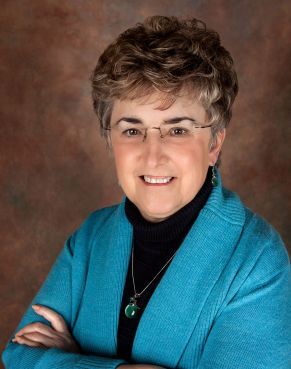
Her Endurance mysteries include Three May Keep a Secret, Marry in Haste, The Locket: From the Casebook of TJ Sweeney, Death Takes No Bribes, and The Witch’s Child. She also wrote A Death at Tippitt Pond. Her latest Art Center Mysteries include Death in a Pale Hue and Death in a Bygone Hue from Level Best Books. She is a member of Mystery Writers of America and Sisters in Crime.
Website: www.susanvankirk.com
FB http://www.facebook.com/SusanVanKirkAuthor/
Instagram: https://www.instagram.com/susanivankirk/
Let’s Talk
by Julie, vacationing on the Cape and enjoying catching up on reading and watching
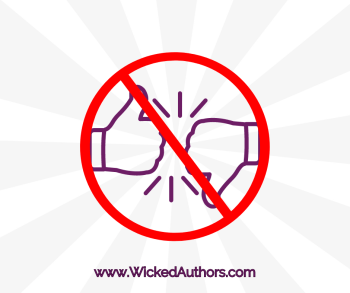
I think that the binary thumbs up or thumbs down in regards to works of art have made us less willing to talk about the work itself. “Like” or “dislike” doesn’t matter. Someone liking a book, and another person not liking a book, doesn’t make one person right and the other person wrong. It means that two people had two different experiences, and it would be great to have a conversation. Not to change each other’s minds, but to expand our own.
There is work that is created to appeal, and there’s a place for that. There’s other work that strives to be more. And by striving there will be parts that succeed, and other parts that fail. But work that strives is much more fun to engage in. Work that pushes itself, and pushes me.
Our thumbs up/thumbs down mentality divides us, and aligns us with people in artificial ways. Because most conversations in life, but certainly conversations in art, are about nuances. Does it work for you? If so, why? If not, why not? I’ve been to plays that have made me weep, and I couldn’t explain why. Other people haven’t been moved at all. Does that make me right, and them wrong? No. It means that at that moment, the work affected me likely because it called on some memory or emotional response beyond my understanding.
Why am I bringing this up? I’ve read two books recently (and I won’t name them, so don’t ask) that I need to discuss. The ending of one took me out of the experience. The construct of the second frustrated me, but the story did not. Both are well written, so that’s not the issue. I need to discuss them to help me deconstruct my thoughts, and then put them back together. Thumbs up/thumbs down are not sufficient.
One of the reasons I love theater is that you see different productions of a show, and they are all different. Some are wildly successful. Some less so. It doesn’t serve to compare one to another. Instead each production informs you of the possibilities. And you bring those possibilities to the next experience.
The same can be said for reading in a genre. Say traditional mysteries. If you read broadly, and constantly, you will have a more informed approach to each novel, and that will make you a more critical reader. Not critical in harsh criticism, but critical in understanding the tropes, the ‘rules’, and the possibilities of the genre. And rejoicing when one book transcends the genre in some way.
Barbara Ross recommended that I read The Thursday Murder Club when it first came out. I tried twice, and didn’t “like” it. She recommended I try it again, telling me that if nothing else it was a great exploration of characters, and of storytelling. The third time was the charm, and I have become a tremendous fan of the series. I’ve reread the series as a writer several times. Barb helped me find another way in, and I took it.
Then there’s Ted Lasso. I had heard mixed things about season three, and spent the first day of vacation bingeing it. And then I rewatched all three seasons, and saw how they are all constructed to tell one story. I love the story, the character arcs, the gentle humanity of the team as they come together. For me, the series works on many levels. Does that mean if you don’t like Ted Lasso you’re wrong? No, of course not. It means that it doesn’t work for you. But it may at another time.
I appreciate all of the folks who take time to read and review books. I especially appreciate folks who take the time to let us know what worked, and what didn’t. But we all have to remember that what works for one person may not work for another. Or one person can appreciate a novel on one level, and someone else appreciates it on another. And remember, there’s a gift in discussing it with someone, even if you disagree.
Readers, what have you read or seen that spoke to you and perhaps you alone? My favorite example of that is the movie Ishtar. Considered at the time to be a huge bomb, it made me laugh very hard.
June 7, 2023
Wicked Wednesday: How do you celebrate summer?
By Liz, so happy to be heading into the summer months!
Happy June! Since this is the month where we officially hit summer here, our Wicked Wednesdays are going to celebrate the best season of the year (next to fall, of course).
Today, we’re talking about your favorite summertime activity as a child. I remember when I was a kid how different it was – we were outside all the time, checking in for meals but that’s it. I spent most of the day on my bike with my neighbors, riding through the neighborhood and pretending to be superheroes. But the best days were when we got to go to the beach. For me, that was the epitome of a memorable summer day.
So Wickeds, what about you? Was it trips to the beach, riding bikes through your neighborhood, staying out with friends until dark?

Edith/Maddie: It was all of that, Liz! I remember whirring up a chocolate milkshake in the sturdy, two-speed blender, and taking it and my book outside to read in the shade. Family trips to the beach where we brought sweatshirts and stayed after we were through swimming and playing, collecting driftwood to make a fire on the beach and roast hot dogs after dark. Our annual two-week tent-camping trips to Sequoia National Park, with hiking and swimming and singing and learning the constellations. Plus nobody cared if you got dirty! I also loved girl scout sleepaway camp, because I could ride a horse. Such fond memories.
Barb: I remember all of that, too. Both sets of grandparents had houses at the beach; my mother’s in Sea Girt, New Jersey, my father’s in Water Mill, Long Island. My father’s mother (Eleonore–who I posted about this week) would pick us up in their ’59 Thunderbird on the last day of school and we’d head to Water Mill for two weeks. While there, we swam in the ocean and at the cut (a part of Mecox Bay that opened up to the ocean once in awhile) and dive for pennies in a friend’s pool and then redeem the pennies at the Penny Candy Store. My great-grandfather visited the same two weeks, so I got to know him well.
Jessie: All of your memories sound so charming! I remember reading almost non-stop during the day and heading to the beach on many evenings to swim in the ocean before it grew too dark.
Sherry: Since we didn’t live anywhere near a beach that was off the table. But we did love going to one of the many local pools. After we were done swimming we were allowed to buy a frozen candy bar — usually a Snickers. I also love playing Jailbreak — a kind of tag — at night or lying on the warm driveway and watching the stars. Plus, like everyone else finding a place to read when it was hot.
Readers, what’s your favorite way to celebrate summer? Let us know in the comments!
June 6, 2023
A Wicked Welcome to Jennifer J. Chow! *giveaway*
by Julie, looking at water and feeling inspired
I am delighted to welcome Jennifer J. Chow back to the blog today! The first book in Jen’s Night Market Mysteries; Death By Bubble Tea was nominated for an Agatha and Lefty award this year, and has also been nominated for an Anthony award. I can’t read to read the second book in the series, and am thrilled she stopped by to talk about it.
Six Degrees of DadBy Jennifer J. Chow

My newest book, Hot Pot Murder, features a small group named AAROA (Asian American Restaurant Owners Association). They happily gather together for a hot pot dinner—only to have one of the diners die at the meal.
Growing up, we owned a family restaurant specializing in Chinese cuisine. We did not have any diners fall dead (thankfully) during our tenure. And although we didn’t have an AAROA, my dad was the Kevin Bacon of the community of Chinese restaurateurs. Six degrees of separation, for sure. Want evidence?
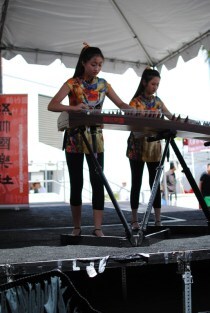
1. Previous restaurant owner
We actually bought our family restaurant from the previous owner, whom we called Uncle Joe (no actual relation). I even remember going to his house. There, I got to admire (and play!) a Chinese zither.
2. Local wait staff
My dad knew when establishments were looking for extra servers, and he helped people get positions. He’d also been the recipient of similar kindnesses when he was a waiter, learning about jobs from friends (or friends of friends). When younger, he worked at multiple restaurants—even commuting back and forth for three hours for one eatery.
3. Bean sprouts king

A family friend was the local purveyor of bean sprouts. Seriously, he was the Bean Sprouts King in the area. I remember helping sort through our restaurant’s invoices and wishing I had a company named after me. (Does being an author count?)
4. Grocery store proprietor
Sadly, Asian grocery stores were few and far between where I grew up. But we did have one shop close to our restaurant. Of course, my dad knew the owner. Bonus: I got to score a free coconut drink whenever I visited.
5. Other Chinese restaurateurs
Dad knew all the other restaurant owners in town. I remember going to one place with my buddy, thinking we’d found a new establishment. When I told my dad, I realized he knew the owner by full name—and proceeded to provide me with their entire backstory.
6. Extended relatives
When my mom’s relatives immigrated over, they also went into the food industry. (Unfortunately, there weren’t many other opportunities for them.) Eventually, they opened up their own restaurant. Now maybe they’ll become the new six-degrees-of-separation people.
I rest my case.
Do you know someone who’s the central hub of a group or community? Let me know in the comments, and I’ll randomly select a name for a giveaway.
BIO:
Agatha, Anthony, and Lefty Award-nominated author Jennifer J. Chow writes the L.A. Night Market Mysteries; Death By Bubble Tea was in The New York Times Book Review and hit the SoCal Indie Bestseller List. She belongs to Crime Writers of Color and currently serves as President of Sisters in Crime.
WEBSITE:
www.JenniferJChow.com
SOCIAL MEDIA:
Facebook and Instagram @jenjchow
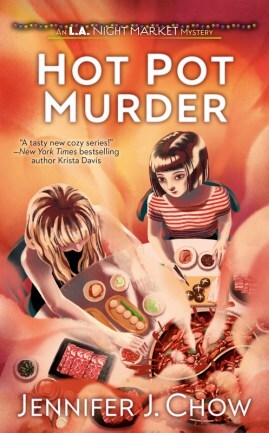
Trouble is brewing for cousins Yale and Celine Yee after a hot pot dinner gets overheated and ends in murder in this second novel of the L.A. Night Market series by Jennifer J. Chow.
Yale and Celine Yee’s food stall business is going so well that they’ve been invited to join an exclusive dinner with the local restaurant owners association. The members gather together for a relaxing hot pot feast…until Jeffery Vue, president of the group, receives a literal shock to his system and dies.
Everyone at the meal is a suspect, but the authorities are homing in on family friend Ai Ho, owner of the restaurant where Jeffery was killed—and Yale’s dad is a close second on their list. Yale and Celine step up to the plate and investigate the dinner attendees: the association’s ambitious VP, a familiar frenemy, a ramen king, a snacks shopkeeper, and a second-generation restaurateur. It’s up to the detecting duo to figure out what really happened before their friends and family have to close their businesses for good.
June 5, 2023
Did my Grandmother Pose for Norman Rockwell?
by Barb, still in book jail
Hi all. I am still in book jail and I barely have two brain cells to rub together. (To prove it, I just had to sit for a second to conjure up the word “cell.”) Therefore, I thought I would rerun an old post, or actually two. The posts were originally from August and September 2012 on the Maine Crime Writers blog. Though many people remember them, we have a whole new audience here that I thought might enjoy them.
I was thinking of my grandmother, and therefore these posts, because of a conversation Friend of the Wickeds Luis Nunez had here with author Marjorie McCown about Luis’s vintage hat collection. My grandmother, Eleonore Kimbel Taylor Ross, was a millinery buyer for Saks Fifth Avenue from the 1930s until she retired in the early 1960s.
The First Post: Did my Grandmother Pose for Norman Rockwell?Originally published August 17, 2012 on the Maine Crime Writers

A few weeks ago, my husband Bill and I took advantage of a talk I was doing at the (gorgeous) Lee Library in Lee, MA to spend a few days at the Red Lion Inn in the Berkshires. On the first day, we visited Edith Wharton’s home, The Mount, which I totally recommend. We also saw King Lear at Shakespeare and Company, which was fantastic.
But when we went to breakfast on the second morning, the dining room was abuzz. We were traveling in that vacation news bubble and didn’t know that there had been a fire overnight at a transformer recycling company in nearby Ghent, NY and everyone was urged to stay indoors and turn off their air conditioning.
So we scrapped our plans for the day and decided to revisit the Norman Rockwell Museum because it is, at least, indoors.
After the main tour, I started poking around investigating something I’d wondered about for years. On a much earlier trip to the museum, I’d come around the corner in a exhibit on Rockwell’s early years in advertising and come face to face with…my grandmother. I was so startled, I think I even jumped.

As a child, I’d overheard references to my grandmother modeling for Rockwell, but this was in the sixties when both Rockwell and my grandmother were still alive and the references were in the “Man, we should have held on to those pictures,” vein. I think honestly I only heard it once or twice and I wasn’t sure if the story was apocryphal. It made some sense, yes. Rockwell was working in New Rochelle, New York in the late teens and twenties, which is where my grandmother lived, but beyond that, who knew? I didn’t think to write down details about the drawing the first time I saw it at the museum or take a photo.
But then, a few years ago when I helped my parents move, I found a couple of other illustrations my grandmother had posed for. That seemed to put a little more meat on the bones of the story. So this summer while we were at the museum, I spent time looking through the catalog trying to find that picture and came up with several advertisements that might possibly be my grandmother. And when I got home, I went back to the scrapbook and looked up those other illustrations.
Both have notes on them in my grandmother’s distinctive handwriting that say, “Eleonore Taylor by Coles Phillips.”
C. Coles Phillips was a well known American illustrator who lived and worked in New Rochelle until he died tragically young in 1927 at age 47. He owned his own advertising agency where one of his first employees was his fellow art school student, Edward Hopper.
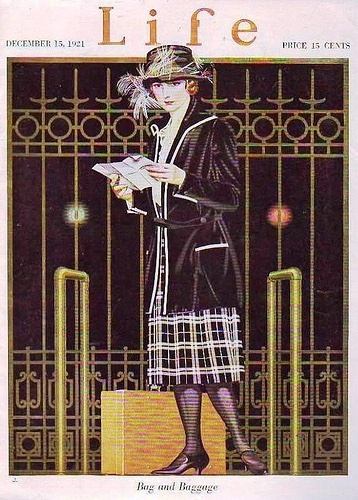
The first item in the scrapbook was a December 15, 1921 cover of Life Magazine. The “fadeaway” technique of having the outfit and background be the same color is something Phillips was known for. Once you know what you’re looking for, you can find these covers all over the web and I ordered copies for family members.

The second item was just a fragment, an ad for Scranton lace, but you can find the full ad on the internet and I ordered an original via eBay. As with the Life covers, Coles Phillips did a whole series of these ads. This one appeared in the Ladies Home Journal in February, 1922 when my grandmother would have been a junior at Smith College.
But did my grandmother pose for Rockwell? Why keep copies of the Phillips illustrations and not the ones by Rockwell? Of course, I never saw any of them out in her house. Which is odd because the advertisement for Lord Calvert whiskey my grandfather posed for was always displayed.

Maybe when I was growing up in the fifties and sixties, 1945, when my grandfather appeared in this series of ads, seemed a lot closer than 1922, when my grandmother’s ads appeared. The drawing at the top of this post (artist unknown) I found tucked in her page from her high school yearbook. So she wasn’t about displaying this stuff. I also remember Rockwell being quite out of fashion in those Mad Men days when I was young, dismissed as a mere illustrator of sentimental subjects for unsophisticated tastes. So that might have contributed.
I wrote to the archivist at the museum, Venus Van Ness (which should totally be a character name, don’t you think?). She said they do have some (scant) information on models and she would check.
What do you think?
The Second Post: Did my Grandmother Pose for Norman Rockwell–The Answer(Or reason number 6,400,057 why I love the World Wide Web)
This post originally appeared on September 10, 2012 on the Maine Crime Writers.
Last month I wrote a blog post about my investigations into whether my grandmother had modeled for Norman Rockwell in the early 1920s.
Well, I think we got the answer!
One of the comments on that blog post said,
“Hello Barbara,
When you have a moment, please feel free to contact me concerning your grandmother and Norman Rockwell. I believe I have the information you’re seeking.
My best,
Robert Berridge
Norman Rockwell historian”
A bit of Googling showed that Robert Berridge was a known Rockwell expert. (For example, he served as a source for Laura Claridge’s 2003 biography Norman Rockwell: A Life). So I wrote him right back. Here’s his response.
“Good Friday morning Barb – happy to help.
After your Grandmother posed for C. Coles Phillips, she modeled for Mr. Rockwell in the following artwork…
* February 25, 1922 cover of the Literary Digest
* Raybestos ad featured in the March 4, 1922 Saturday Evening Post
* March 23, 1922 cover of Life Magazine
Please feel free to send additional information concerning Eleonore.”
This is truly astonishing. Because it means that when I came around that corner at the Rockwell museum that day and thought I saw my grandmother, I actually did. Naturally, as a writer, I started thinking about how I would make this moment believable if it was in a book. The answer is that the first, wholistic impression, the one that takes in the attitude as well as the totality of the physical aspects is the right one. After that, the more you study it, the less sure you are. I had never known my grandmother when she was twenty-one, yet I was positive it was her.
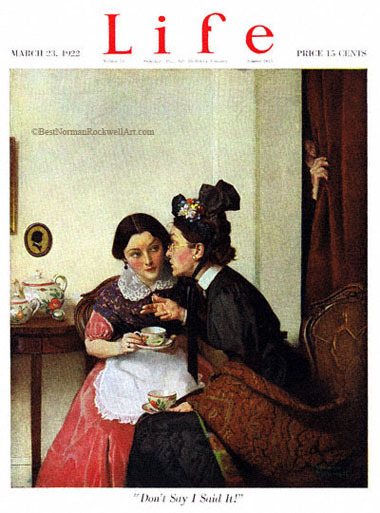 March 23, 1922 Life Magazine cover, “Don’t Say I Said Anything.” My grandmother is on the left.
March 23, 1922 Life Magazine cover, “Don’t Say I Said Anything.” My grandmother is on the left.Here’s what I wrote back to Berridge about what I knew about my grandmother during those years.
“As for my grandmother’s New Rochelle days, I don’t know a lot. I think she would have been a junior at Smith college in 1922. Her family had moved to New Rochelle (Sea View Ave) when the suburbs opened up. She was the oldest in the family and always missed New York City–never quite made the switch. Her mother’s family were quite well-known interior designers–A. Kimbel & Son.”
I asked Mr. Berridge how he knew this was my grandmother, and this is what he said,
“Over the past forty years, I’ve conducted thousands of oral interviews, phone calls, letter writings and emails concerning the life and times of Norman Rockwell-a hobby that went out of control! My archives are vast.
 February 25, 1922 cover of Literary Digest, “The Master Violinist.” My grandmother’s face appears just under the bow.
February 25, 1922 cover of Literary Digest, “The Master Violinist.” My grandmother’s face appears just under the bow.“In the mid 1980’s, I happened to interview a close friend of Mr. Rockwell’s in New Rochelle, NY – a behind the scenes Rockwell biographer of sorts. In that interview, I received a treasure trove of information including that of your Grandmother Eleonore.
“In November of 1921, Mr. Rockwell traveled to South America. He started one sketch right before he left and two soon after he came back. Your Grandmother’s name was given to me as the young woman who modeled for those sketches – the illustrations listed….”
Once I knew what I was looking for, I found the other covers easily on the web. They’re both well-known works. Some people believe the Life cover, “Don’t Say I Said Anything,” is emblematic of Rockwell’s life-long hatred of gossip and presages his much better known Saturday Evening Post cover, “The Gossips.” “The Master Violinist” was made into a Rockwell plate (plate like a dish, not plate as in printing) and depending on the condition and lighting, you can see her face much more clearly.
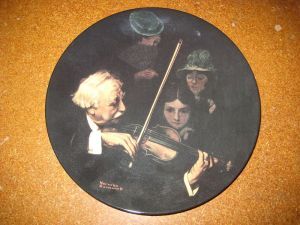
All of the artwork my grandmother appears in, both the C. Coles Phillips pieces and the Rockwell ones, was published in a period of a few months between December, 1921 and March, 1922. I have no idea what lead times were like in publishing in those days, but it makes me wonder if my grandmother spent the summer between her sophomore and junior years in college modeling.
It must be noted here that Venus Van Ness, the archivist at the Rockwell Museum writes that there is no documentation to support the oral histories Berridge collected in this case. Here’s her response.
“I spoke with Robert Berridge last week about your grandmother. Based on the extensive oral histories that he has conducted with individuals connected with Rockwell, he determined that your grandmother was in fact a model for Rockwell. He didn’t provide me with any real specifics or documentation, however, so that basically still leaves me at square one.
“Unfortunately because the dates in question are so early in Rockwell’s career, it’s difficult to find supporting documentation. One source that we rely on here are Rockwell’s check registers. In many cases, the check stubs show us who modeled for Rockwell, the date(s), the particular work, as well as how much they were paid. The problem is that these check registers only date back to 1937. Additionally, the business correspondence collection that we have has very few items from the teens and twenties.
“So, to make a long story short, I can’t confirm that grandmother was a model for Rockwell. However, based on the dates, the fact that she lived in New Rochelle, and had worked as a model for other artists, makes it very possible. At that time in Rockwell’s early career, he did employ professional models. Your grandmother may very well have been one of them.
“So sorry that I couldn’t be more definitive in my response. Best of luck with your continued searching.”
So there is still a leap of faith here, though a much tinier leap than before.
TodaySince the original posts went up, I’ve found a couple of articles about the Raybestos ad, both in communications from the Rockwell Museum.
A 1986 article about the acquisition says, “Painted on canvas en grisaille, the picture is interesting for several reasons. The black and white palette reveals that the advertiser chose not to go to the expense of color printing. The ad predates the use of photography in advertising work and is one of seven known pieces done for the Raybestos company. It is one of the few Rockwell works which treat the subject of mother and daughter, and it is the only one in the series which is clearly aimed at the female reader. The picture is important as an addition to the collection since advertising art is not well represented in the Museum’s holdings.”
The image also illustrates the website for a 2020 exhibit on Rockwell’s paintings of women and girls. Part of the text says,
“This exhibition takes a lively look at Rockwell’s approach to painting women and girls. According to Rockwell, ‘…I paint the kind of girls your mother would want you to marry,’ but in fact, many of his female protagonists were strong and savvy. In his early career, he hired professional female models to pose for him, painting with a narrative realism that made his characters relatable to magazine’s target audience, women.”
So that’s it, long story long. I must say the journey on this investigation was a fun as the result.
Readers: Have you ever gone on an investigation where the journey was as much fun as the results?

